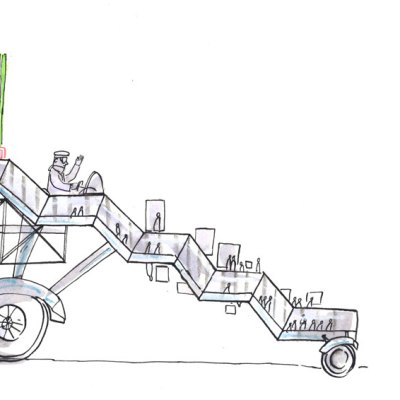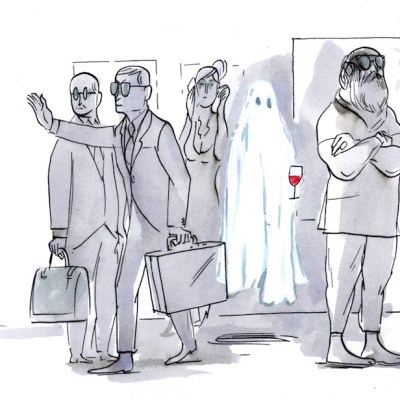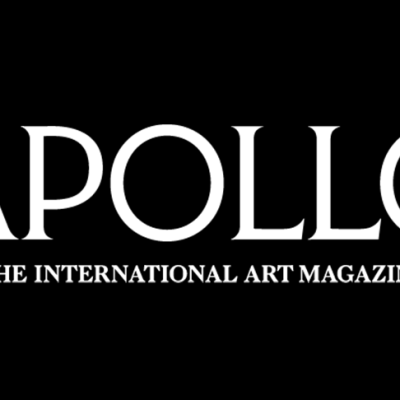This year, for the first time, Documenta will be split between Kassel and Athens. Is this ‘crisis tourism’ that plays on Greece’s financial instability, or will it spotlight the city’s overlooked contemporary art scene?
Katerina Koskina
Since the Greek War of Independence in the early 19th century, Greece has undergone a number of turbulent developments. Today, the country’s ongoing financial and political turmoil, as well as its social struggles and problems with mass migration, have attracted much international media attention.
Perhaps this explains why the decision by Adam Szymczyk, artistic director of Documenta 14, to stage the event both in Kassel and Athens has raised criticism around issues of ‘exoticism’ and ‘colonisation’. Certainly, previous Documenta directors have used decentralisation as part of their exhibition concept – the 13th edition in 2012 included projects in Cairo and Kabul, for example – yet this year’s edition is the first one attempting to decentralise on such a large scale.
It is only natural that the economic crisis in Greece becomes a point of reference. The first edition of Documenta in Kassel in 1955, led by artist Arnold Bode, made a political statement about the country by showing degenerate art that had been banned under the Nazi regime. Athens has been chosen by Documenta 14 because it embodies the economic, political, social, and cultural dilemmas that Europe faces more broadly.
I believe that Documenta 14 has come to Athens at just the right moment. Despite the crisis and its impact on the everyday lives of Greek citizens, there is a strong public interest in culture – especially contemporary art. Furthermore, Greece’s contemporary art scene is less well known in comparison to other European – and, for that matter, international – countries. Documenta 14 will not only raise awareness about Greece in general, but will hopefully direct public interest towards the country’s contemporary art scene. The atmosphere of solidarity and the sense of community that have emerged over the last few years as a result of the country’s economic crisis should spark ongoing discussion.
As Documenta 14’s working title ‘Learning from Athens’ indicates, the event intends to learn from Athens and its citizens, instead of parachuting a prepackaged event from Kassel into one or more venues in Athens. Documenta 14 has unfolded through a three year-long process of learning, testing reactions, establishing collaborations and producing knowledge, while also engaging in the process of creating spaces for public life in both locations. As a result, both cities have contributed significantly to the project.
Among the synergies that have taken place in Athens between Documenta and the city’s cultural producers – such as the Athens Municipality, the Athens School of Fine Arts, and the Benaki Museum – is the role played by the National Museum of Contemporary Art (EMST). The two institutions started discussions as early as 2013; in 2016 they decided to collaborate based on the exchange of knowledge and experiences – an example of how ‘Learning from Athens’ has been put into practice. In 2015, Documenta curators, artists and other collaborators visited the former Fix brewery, now the Museum’s new home. EMST and its collection, which consists of more than 1,000 works of art from the 1960s onwards, and which explores concepts and practices around cultural pluralism, the intersection of cultures, the relationship between politics and art, and cultural nomadism, became central to how Documenta has been developed. Through this process, the two institutions proposed a mutual relocation of their headquarters: the EMST building would become the main venue to host Documenta 14 in Athens. In turn, the Fridericianum – the traditional base for Documenta in Kassel – would host an exhibition of the permanent EMST collection based on the museological study approved by the Greek Ministry of Culture and Sports in April 2016.
As far as EMST is concerned, the supposed ‘controversial’ decision for Documenta 14 to come and learn from Athens allows both Kassel and Athens to engage in an honest and fruitful exchange. This will help a great deal in the success of our mutual and distinct goals.
Katerina Koskina is director of the National Museum of Contemporary Art (EMST) in Athens.
Iliana Fokianaki
One of the reasons that Athens is alluring as a location for Documenta 14 is Greece’s economic crisis. Over the last eight years, Athens has been an attractive destination for people from the fields of art, sociology, urban studies, and philosophy – to name a few – who would not necessarily have visited before. In this light, what is crisis for one is cultural capital for another.
Crisis creates interest. In the context of Western art (and large-scale transitory events more specifically), relocation is used as a mode for reframing art-historical narratives, or regenerating curatorial frameworks. In this way, what is more alluring than the periphery? Greece has always been an artistic periphery and is certainly a financial periphery. In comparison to more remote locations, Greece is generally very safe, most of its citizens speak English, and it is easily accessible and familiar in the context of its EU membership. We can observe a surplus benefit to crisis-as-capital in the context of Athens: it offers the adventure of the periphery, without its usual dangers.
Since Documenta 10, curated by Catherine David, the institution has sought to overcome its natural borders within Kassel. This was perhaps most successfully realised in Documenta 11, curated by Okwui Enwezor, which reinvigorated the notion of the mega exhibition via a five-platform model that travelled across five cities and ended up in Kassel. Perhaps less successful was the model used by Carolyn Christov-Bakargiev’s Documenta 13, which focused on Kassel and Afghanistan. War-torn Afghanistan was perhaps a periphery too far; such an approach can be read in terms of Orientalist exploitation.
Documenta 14 has faced particular financial difficulties in persuading the institution to provide funds for both locations – this has posed a challenge in terms of implementing its public programme and upcoming exhibition in Athens. However, the free buildings provided by the Fine Arts School and the Municipality of Athens for either office space or project space, have enabled the programme to unfold without incurring financial losses. The organisation has also managed to gain funds from local Greek, or Greek-born sources through its ‘International friends of Documenta’ list.
Following my discussions with Greek employees of Documenta, it’s clear that their salaries are very modest. The precarity of the art worker, though, is not simply a Greek phenomenon; large institutions tend to offer fewer financial benefits to artists and curators. As artist Hito Steyerl says in Are you Working too Much? Post-Fordism, Precarity, and the Labor of Art: ‘The art field is a space of wild contradiction and phenomenal exploitation.’ Once the European troika has finished plundering infrastructure and resources in Greece, crisis-as-capital will perhaps be the only remaining ‘resource’ from an outside perspective. Of course, Greeks don’t see much return for this value.
Yet in coming to Athens, Documenta will help Greece’s art scene. Firstly, its presence will generate international interest, and familiarise visitors with Greece’s contemporary art scene. It is also to be hoped that Documenta will direct visitors to other art spaces in Athens. Secondly, and most importantly, its presence has forced local authorities and politicians to learn that there is such a thing as contemporary art. There is no infrastructure for contemporary art in Greece: no funding body, no grants, no benefits, no financial assistance, not even a tax system to support art workers. Most – if not all – employees of the Ministry of Culture in Athens are archaeologists with very little knowledge or interest in contemporary art. Documenta raises awareness of Greece’s extensive list of non-profit initiatives and art spaces.
Documenta 14 exploits crisis as cultural capital, but it should create additional interest in contemporary art – and, in positive terms, leave something for the Greeks to exploit back. This might be considered a form of ‘dual exploitation’, serving the visitor first, and the host after. We must hope that the legacy is more tangible than that left in the wake of the 2004 Olympic games.
Iliana Fokianaki is a writer and curator based in Athens and Rotterdam, and the founder of State of Concept Athens.
From the April 2017 issue of Apollo: preview and subscribe here.



